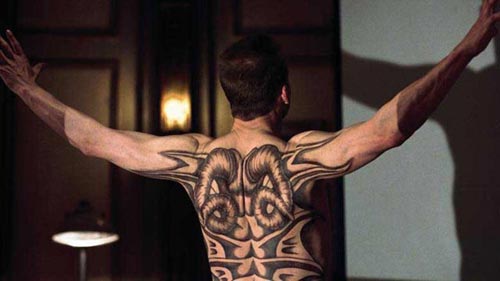Red Dragon: Dir. Brett Ratner
Not to be one of those “George Lazenby was my favorite James Bond” types, but Manhunter is perhaps the best of the films based on Thomas Harris’s Hannibal Lecter novels, although it may not be as well known as the others. Which leads me to ask why Red Dragon the movie needed to be made at all, since Manhunter already brought the Red Dragon novel to the screen so superbly.
I’m also puzzled as to why Edward Norton, arguably the De Niro of his generation, needed to be in this film. De Niro was in Taxi Driver, The Godfather and The Deer Hunter and now he lends his talents to buddy cop movies with Eddie Murphy. I sincerely hope that Mr. Norton doesn’t stumble down that same questionable path.
My lack of enthusiasm doesn’t mean I found Red Dragon to be a bad movie, just unnecessary. The remarkable cast includes Harvey Keitel, Emily Watson, Ralph Fiennes and Philip Seymour Hoffman. But like a 1970s rock supergroup, they don’t quite meet your expectations. Most everyone is good, and the usually dashing Fiennes succeeds in being unattractively creepy as killer Francis Dolarhyde. Keitel phones in his performance, which is unfortunate, since Dennis Farina in Manhunter really made the most out of a character that is, let’s face it, secondary to nearly everyone else in the movie.
And the most important character is Will Graham, the FBI agent played by Norton. Sure, Lecter and Dolarhyde are vital. But Graham is a serial killer profiler, so he’s the ubermonster of them all, being able to think, see and feel like they do. I guess I shouldn’t be too surprised by Norton appearing in such a part; his stock in trade is playing the hero with a heart of black. Even in Death to Smoochy, his wheatgrass shake-guzzling, acoustic guitar-playing character did some time in an anger management program. But the profiler-on-the-edge thing has been beaten to death and I’m afraid that the grisly history of serial killers threatens to become the same cartoonish pop culture fodder as the aliens on The X-Files.
For the character of Hannibal Lecter, it’s too late; he’s already a parody of himself, and no one except young children or grandmas are any more scared of him than they are of Freddy Krueger. Granted, this time around Hopkins displays a more restrained creepiness, but I’ve never moved past Brian Cox’s superior portrayal in Manhunter, where you dreaded him lunging at Graham, instead of expecting it. Fiennes is fine, but Tom Noonan ruined me against believing anyone else as Dolarhyde (and in fact, I can’t take Noonan seriously in any other role).
Manhunter, directed by Michael Mann, was released in 1986. But before you groan at memories of Miami Vice, consider how well his icy blues and chrome could (and did) work for the story of cold-hearted murderers. (Interestingly enough, Ratner uses Mann’s cinematographer Dante Spinotti.) Red Dragon’s organic palette is all decaying sepia tones. The fairly vintage look is enhanced by Dolarhyde’s “mood music”: old jazz played on old 78s. I found Mann’s use of Shriekback’s “The Big Hush” to be much more chillingly appropriate, but then again, I never stopped liking most mid-’80s new wave.
And I haven’t stopped being a fan of Edward Norton, despite my misgivings about Red Dragon. Really, the whole movie belongs to him. It’s always a pleasure to watch him at work. Who else could make blue eyes look so violent? Unlike William Petersen, Norton’s Graham is more plausible, more damaged and more on the verge of losing his shit. I detest spoilers, so I won’t tell you about the scene towards the end that can only be described as “Classic Edward Norton.” Hopefully, Manhunter fans will give this movie a look-see, if only for Norton’s performance, and Hopkins fans will check out Manhunter in turn.
No commentsNo comments yet. Be the first.
Leave a reply



